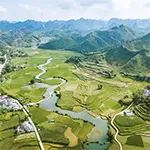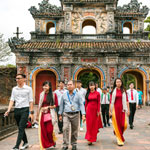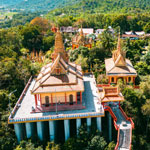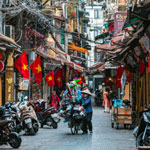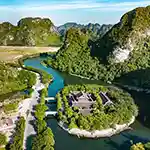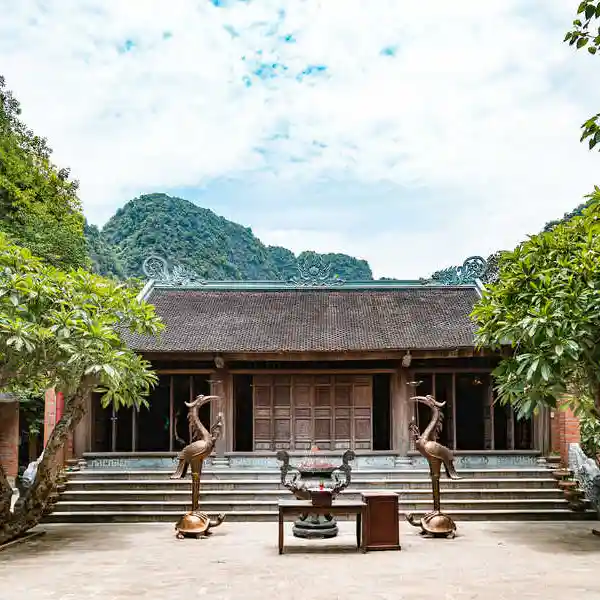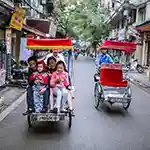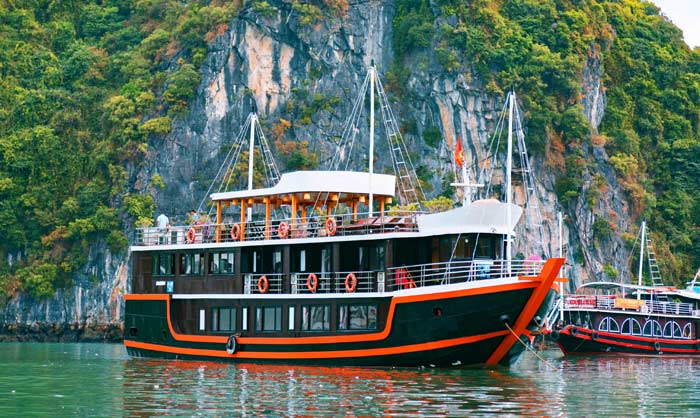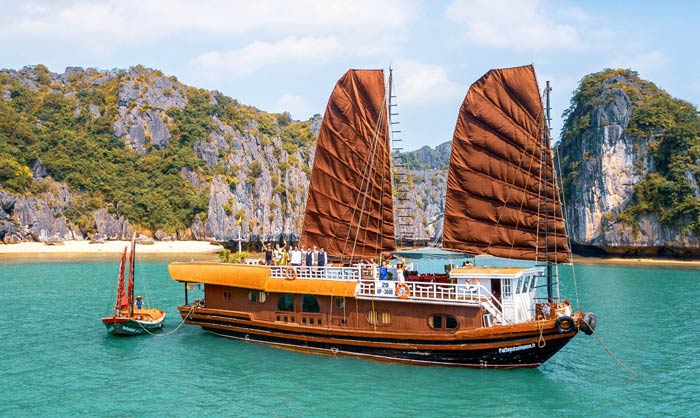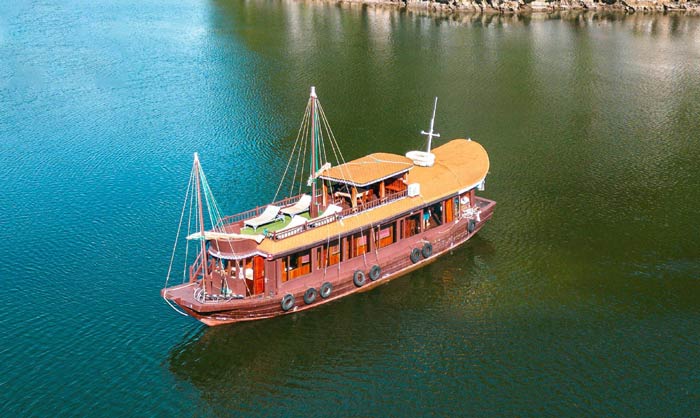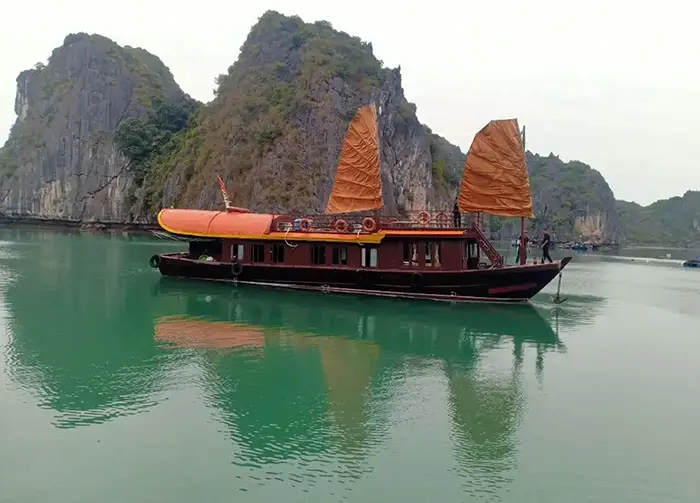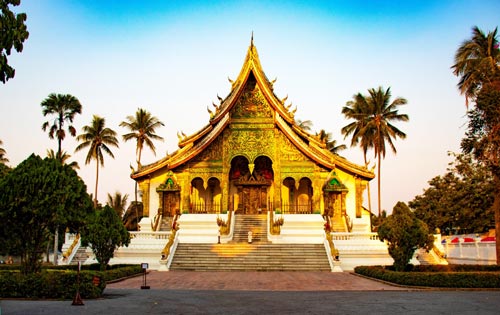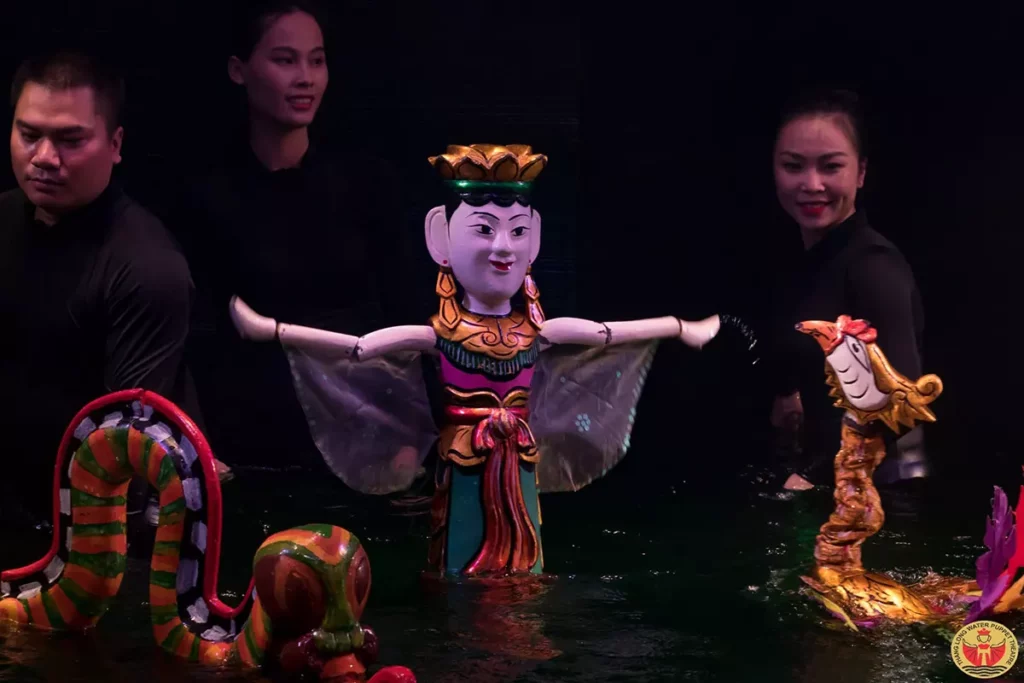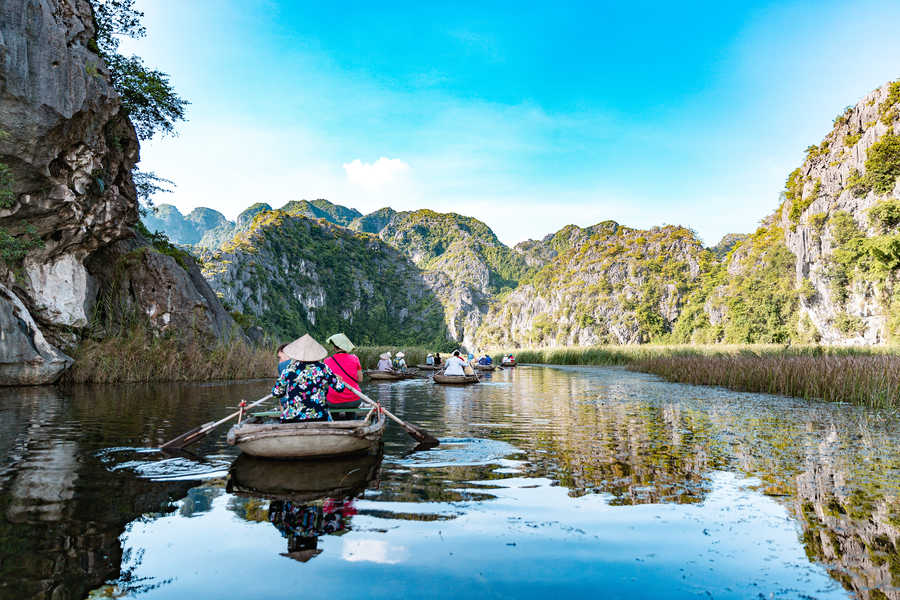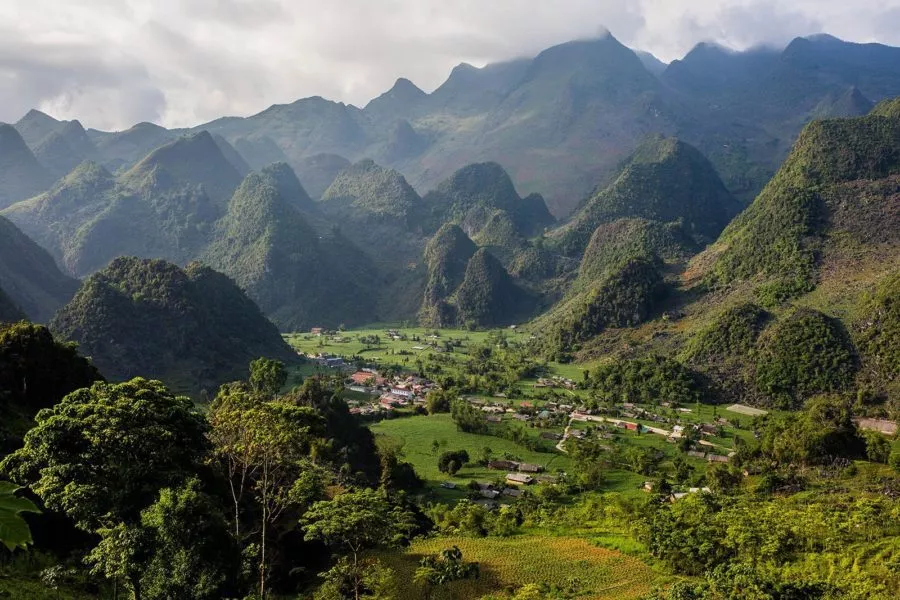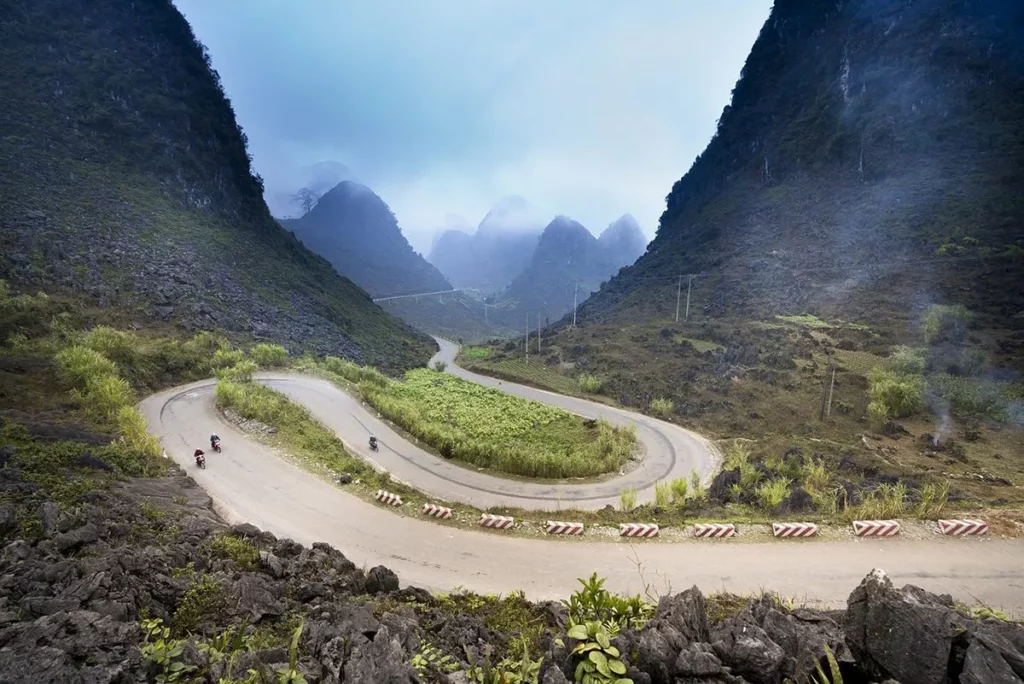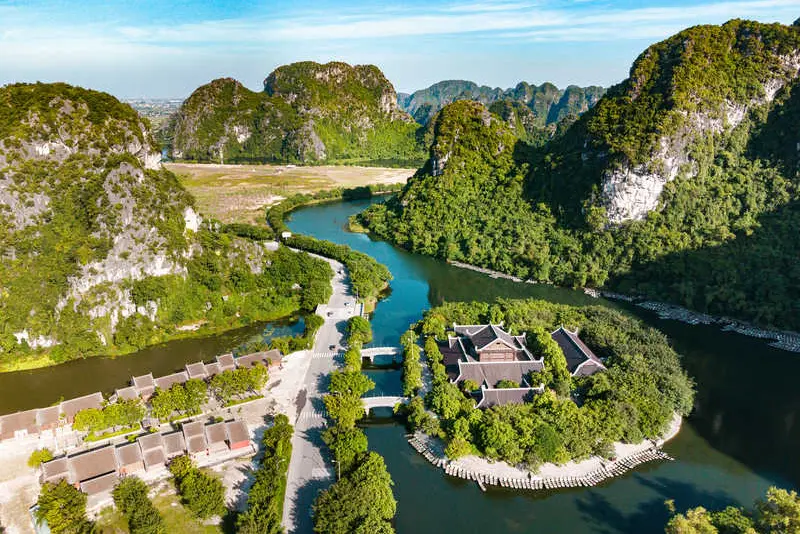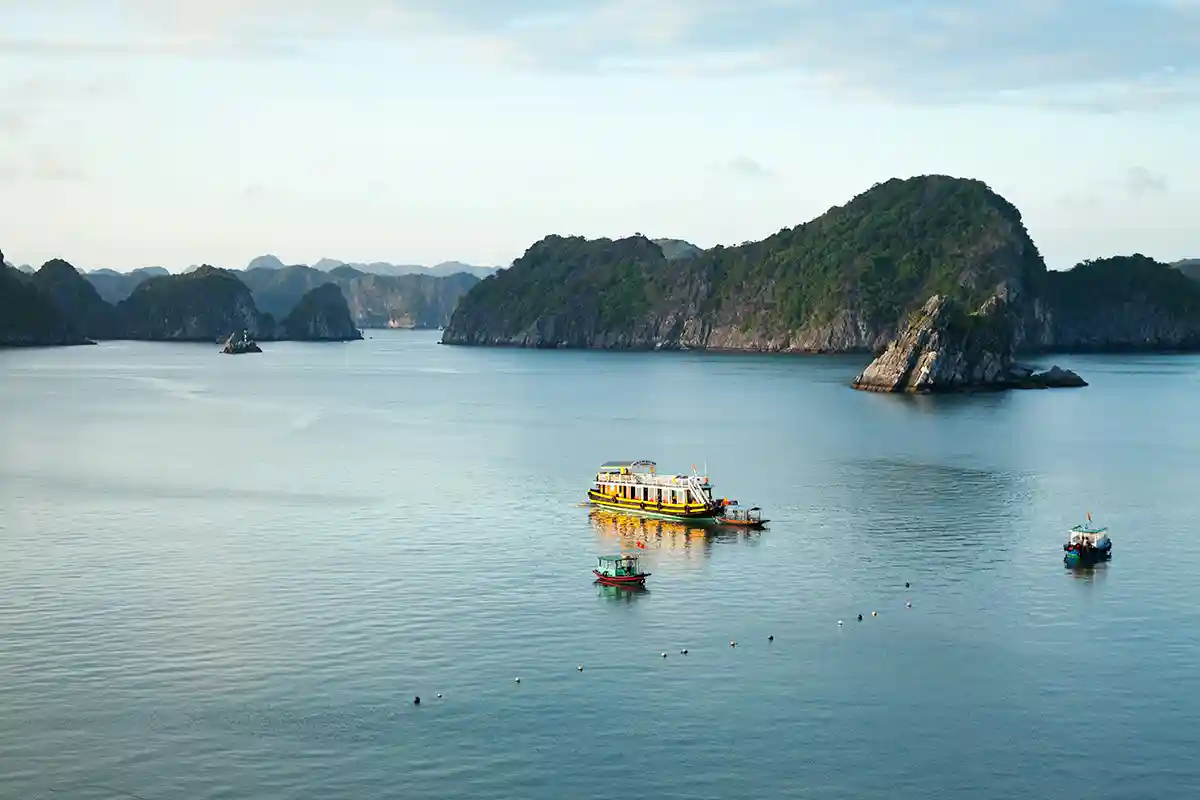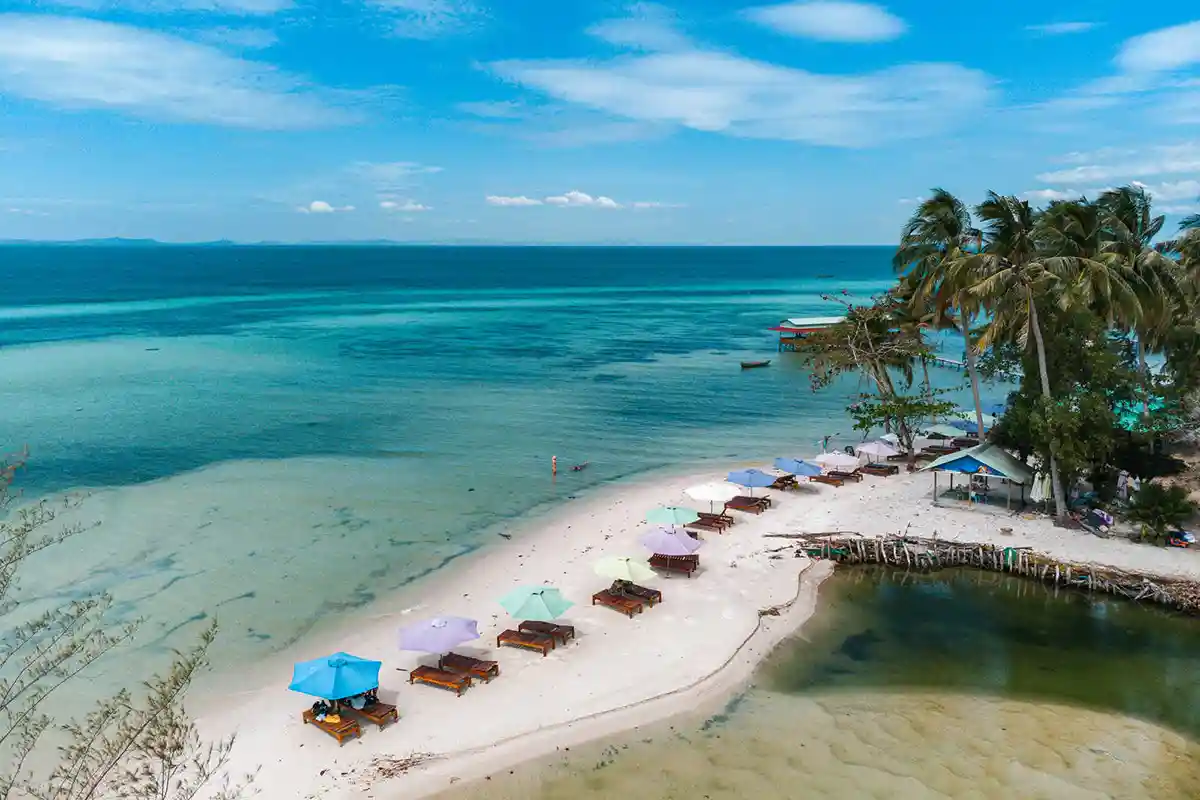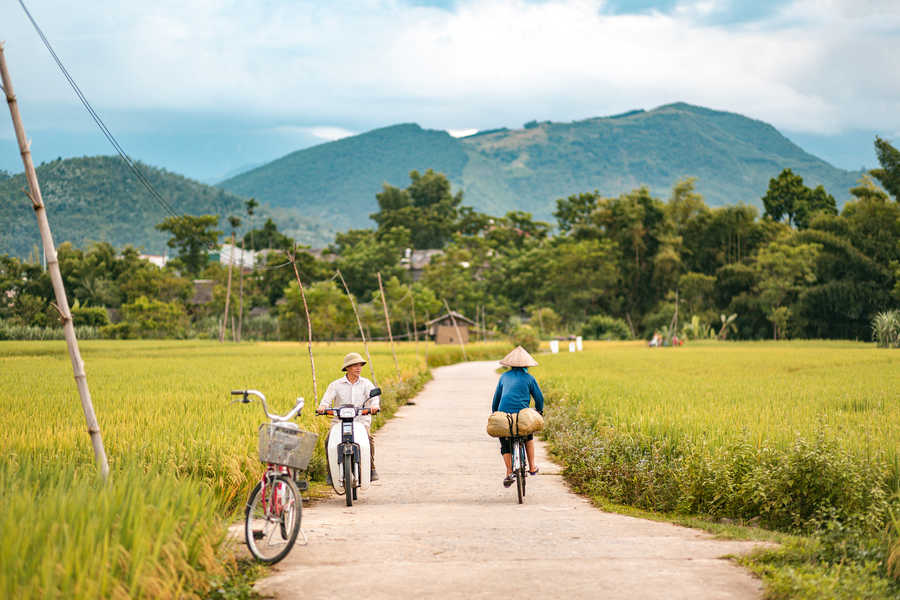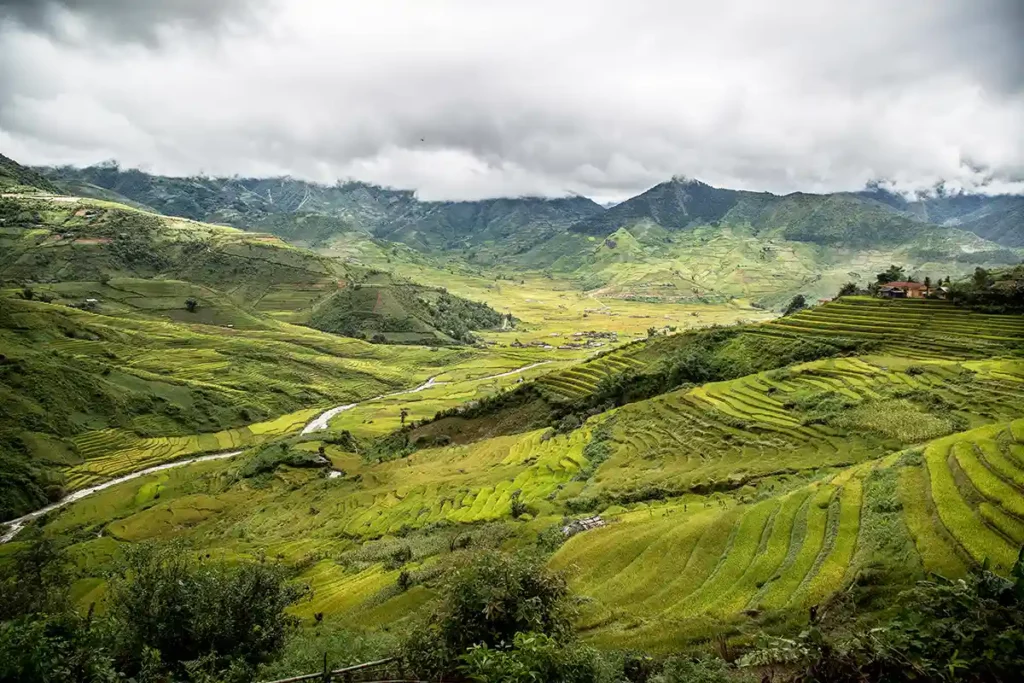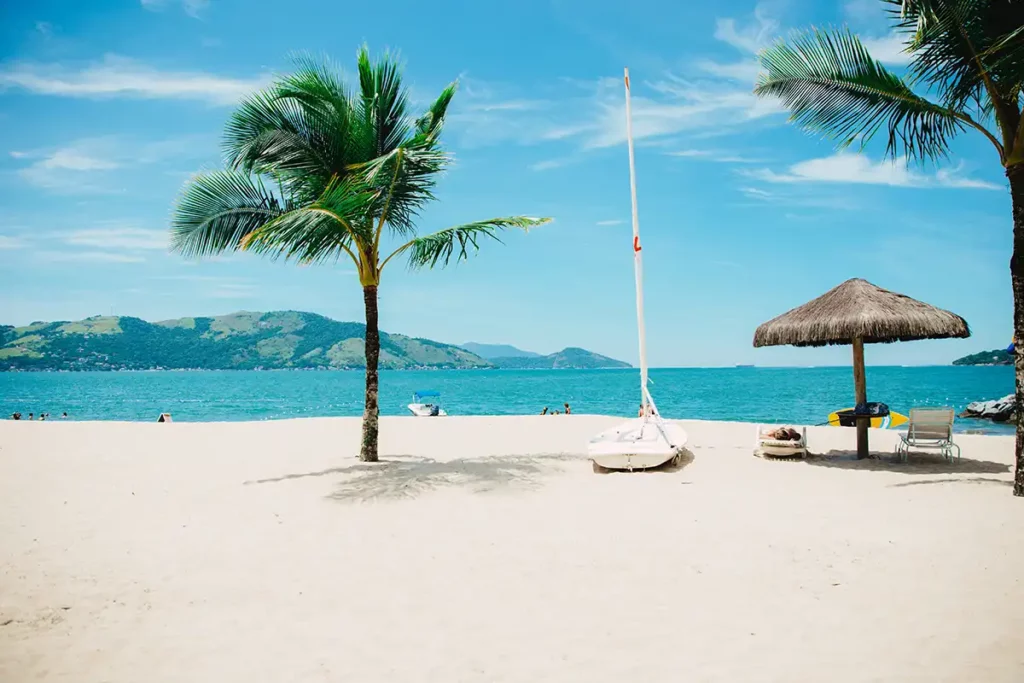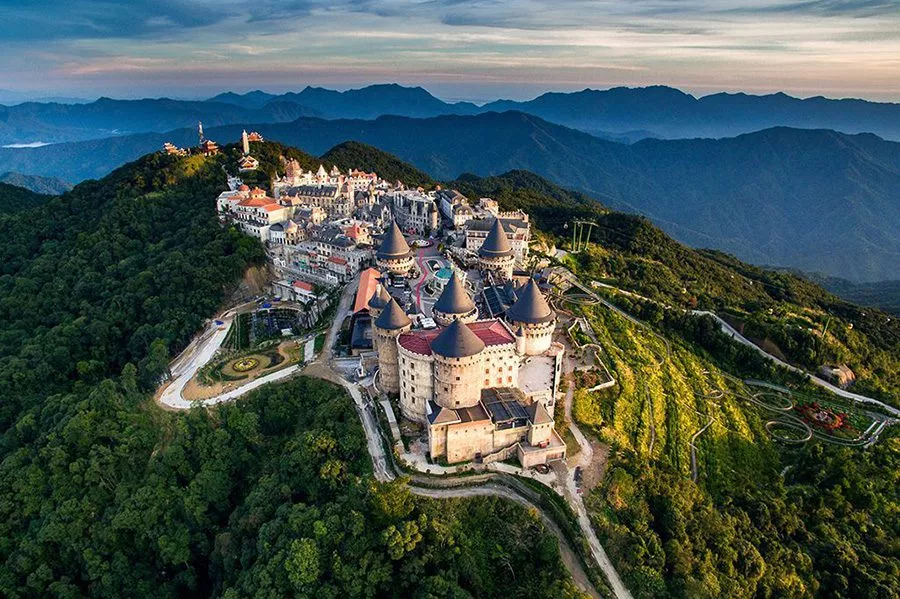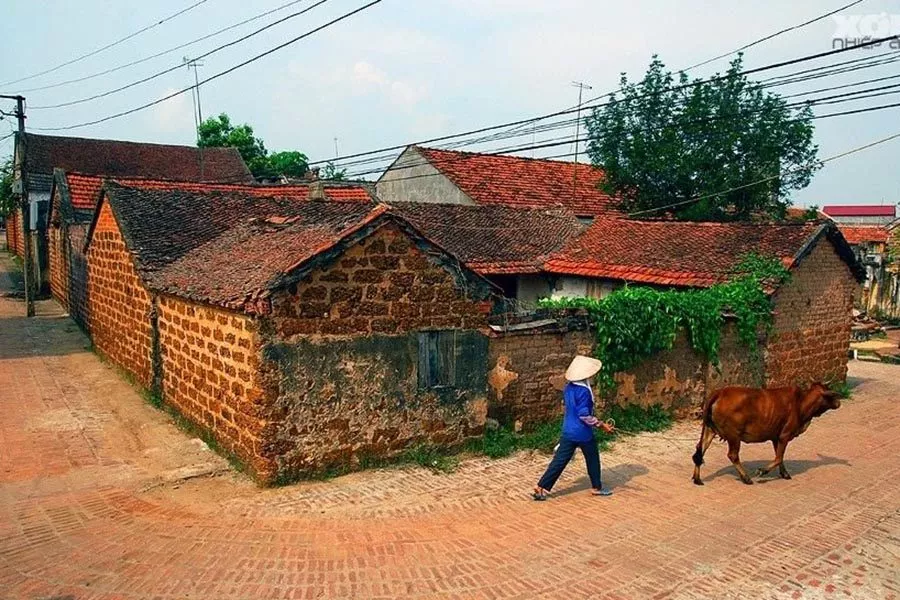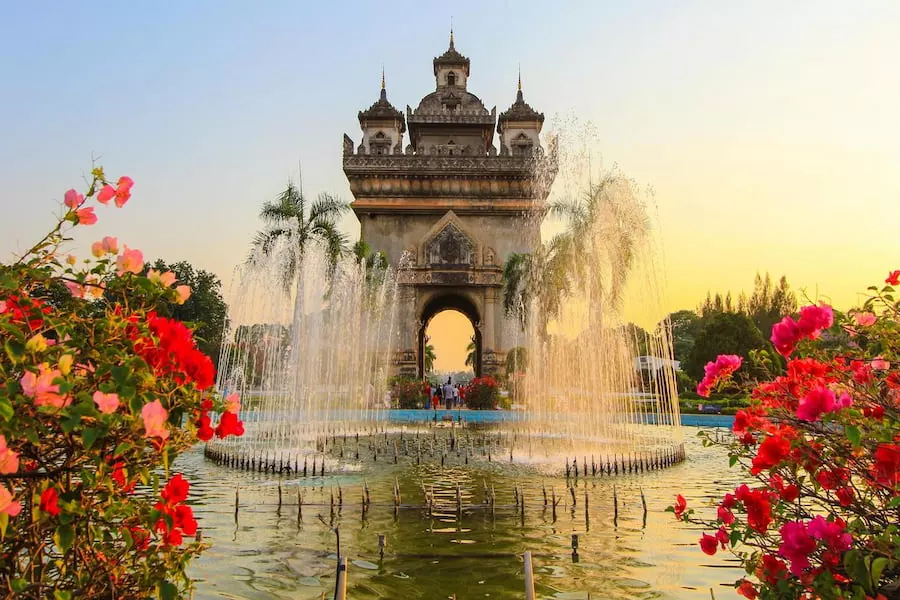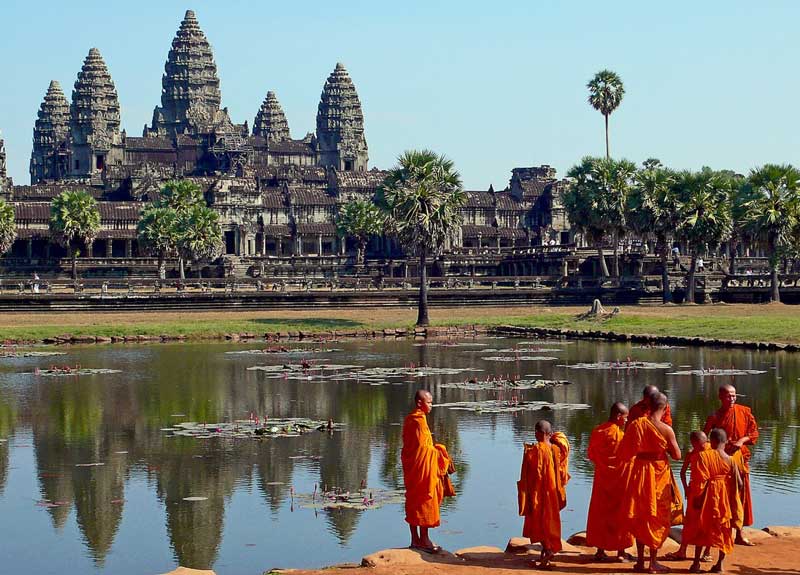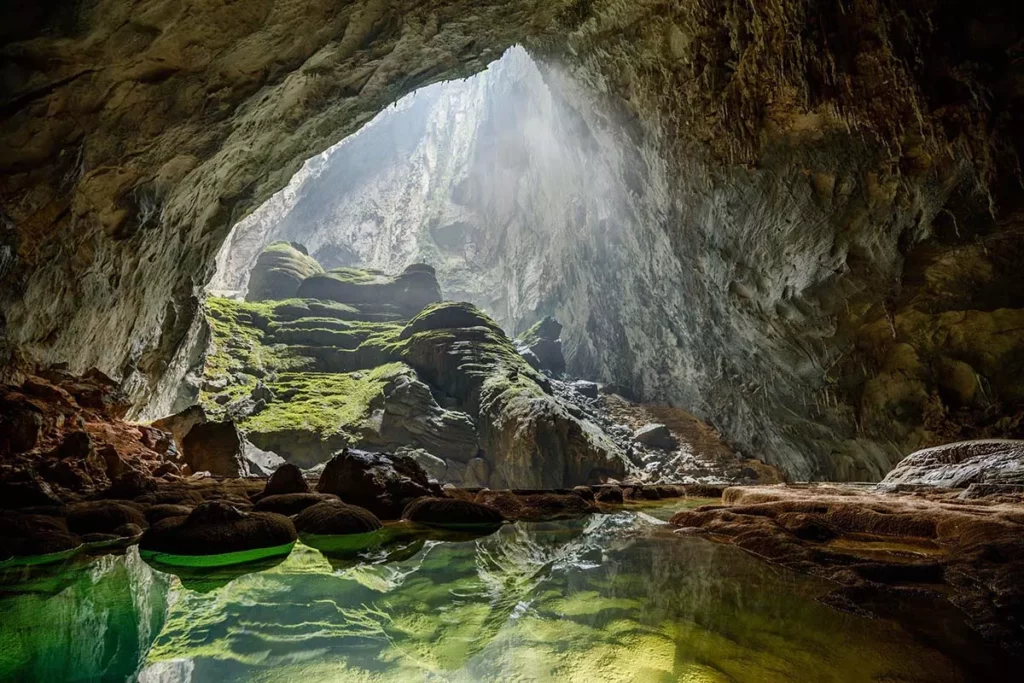The art of water puppetry in Vietnam, known as “Múa rối nước,” is a fascinating tradition believed to date back to the 11th century, or even earlier. It originated in the flooded rice fields of the Red River Delta in northern Vietnam. This unique art form combines puppetry, music, sound effects, and sometimes even elements of fire to tell stories that reflect Vietnamese legends, traditions, and village life.
In this article, we provide all the essential information about this Vietnamese art and the best places to watch a performance.
Feel free to contact us to organize your private tour in Vietnam.
What is a water puppet show?
A water puppet show is a traditional Vietnamese form of theatre that combines puppetry, music, and storytelling. The performances take place on a water stage, where puppeteers control the wooden puppets using long poles and hidden strings beneath the surface. The puppets, made of wood and lacquer, are intricately designed and painted to represent various characters, animals, and mythical creatures.
History of water puppetry
The history of water puppetry in Vietnam dates back to the 11th century, during the Ly Dynasty. It is believed that this art form emerged as entertainment for farmers in the Red River Delta during the rice harvest season. Standing in flooded rice paddies, farmers would manipulate puppets on the water’s surface, telling stories and legends to bring joy and amusement to their communities.
Over time, water puppetry evolved into a sophisticated art form and became an integral part of Vietnamese culture. The performances spread beyond rural areas and gained popularity in cities. Dedicated water puppet theatres were established, and shows began incorporating more elaborate puppets, musical accompaniment, and complex storytelling techniques.
Techniques and Performance
The puppets are made from wood and coated with lacquer to protect them from water damage. Puppeteers, hidden behind a screen, use bamboo poles and strings to control the puppets, which appear to dance gracefully across the water’s surface — their stage. This process requires great skill and many years of practice to master.
Music plays a crucial role in water puppet performances. Traditional Vietnamese instruments such as the đàn bầu (monochord), đàn nhị (two-string violin), flutes, and drums provide the musical backdrop. Songs and instrumental music accompany the puppets’ movements, enhancing the emotions and atmosphere of each story.
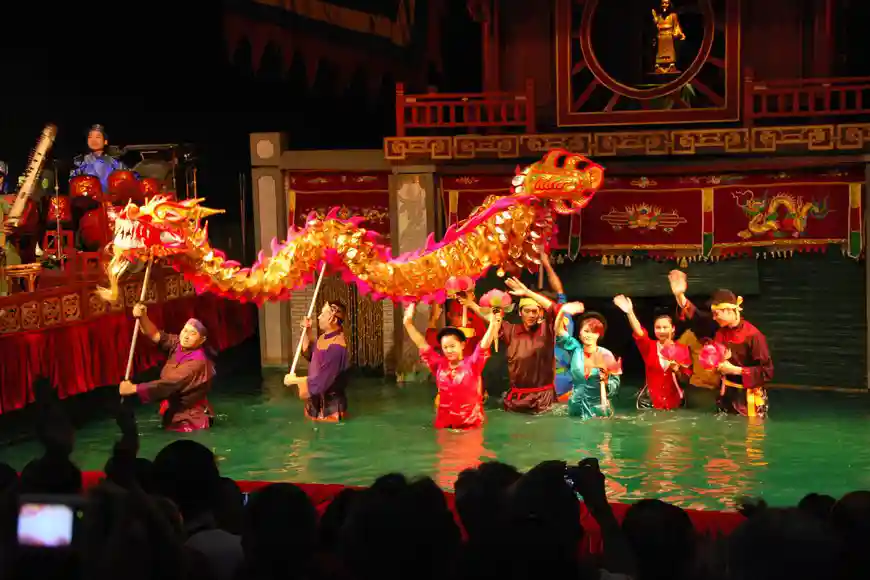
La marionette et les marionnettistes
Themes and stories
Water puppet shows are deeply rooted in Vietnamese rural life and folklore. They celebrate the country’s agricultural culture, rich mythology, and strong sense of community and tradition.
Common themes include
Agricultural life: Many performances depict scenes of daily village life, such as rice planting, fishing, or bustling village markets. These scenes highlight the harmony between humans and nature, as well as the importance of hard work and community in rural life.
Legends and myths: The stories often draw from Vietnam’s vast treasury of myths and legends, portraying heroic figures, benevolent dragons, fairies, and other supernatural beings. These tales usually carry moral lessons about courage, loyalty, and wisdom.
Symbolic animals: Animals play a central role in many performances, each carrying its own symbolic meaning. The dragon represents power and prosperity, while the carp symbolizes perseverance and determination. These animals often feature in stories that explore their virtues and teachings.
Festivals and celebrations: Some performances depict Vietnam’s important festivities and ceremonies, such as Tết (Lunar New Year) or the Hùng Kings Temple Festival. These shows offer audiences a chance to experience Vietnam’s cultural traditions and shared values.
A classic example is “The Fisherman’s Return”, which tells the story of a fisherman battling the elements to bring fish home to his family — a tale that reflects both the hardships of rural life and the virtues of perseverance and ingenuity.
Another popular story is “The Dancing Dragon,” where a dragon brings rain to the parched rice fields. This tale symbolizes the blessing of prosperity and abundance — vital elements for the survival and happiness of farming communities.
Experiencing a show today
Today, water puppet performances continue to captivate audiences in Vietnam and attract visitors from around the world. They are usually held in dedicated theatres, the most famous being in Hanoi and Ho Chi Minh City. These shows combine traditional music, singing, and puppetry to create an enchanting spectacle.
You can expect to see a range of scenes depicting daily rural life, historical events, and mythical tales. The puppets glide gracefully across the water, appearing lively and animated, while the puppeteers skillfully control their movements from behind a bamboo screen.
Attending a water puppet show offers a unique opportunity to immerse yourself in Vietnamese culture and folklore. The vibrant colors, rhythmic music, and storytelling transport viewers into a world of tradition and legend — a delightful experience that provides insight into Vietnam’s rich artistic heritage.
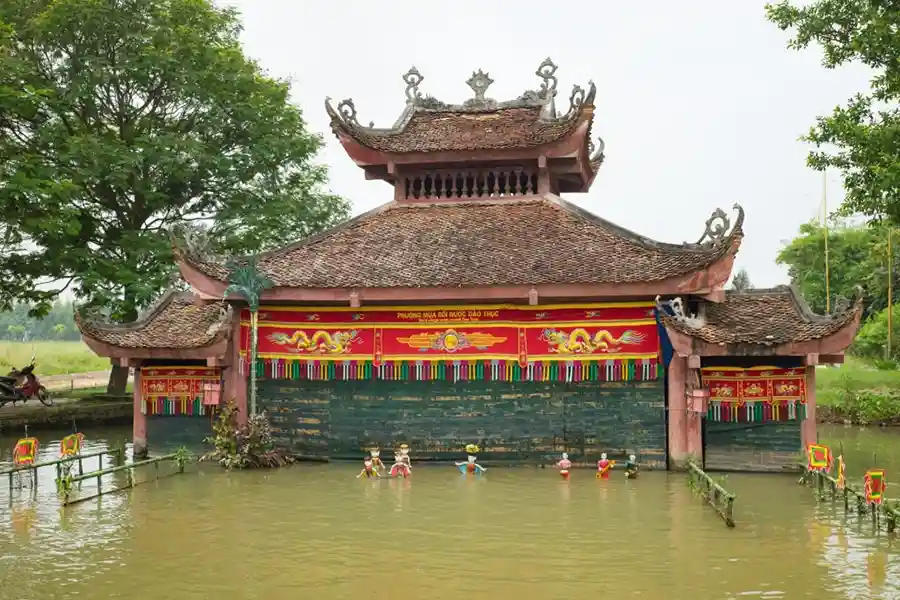
Décor d’un spectacle de marionnettes sur l’eau
Where to see a water puppet show in Vietnam
While cities like Hoi An and Hue once hosted water puppet performances, the COVID-19 pandemic and nearly two years of border closures unfortunately led to the closure of some theatres. However, here are several popular venues where you can still enjoy these traditional shows:
Thang Long water puppet theatre (Hanoi)
Located in Hanoi, the Thang Long Water Puppet Theatre is the most renowned and iconic venue for water puppet performances in Vietnam. With a history spanning decades, it offers captivating shows that celebrate traditional Vietnamese culture.
Adress : 57B P. Đinh Tiên Hoàng, Hàng Bạc, Hoàn Kiếm, Hanoi
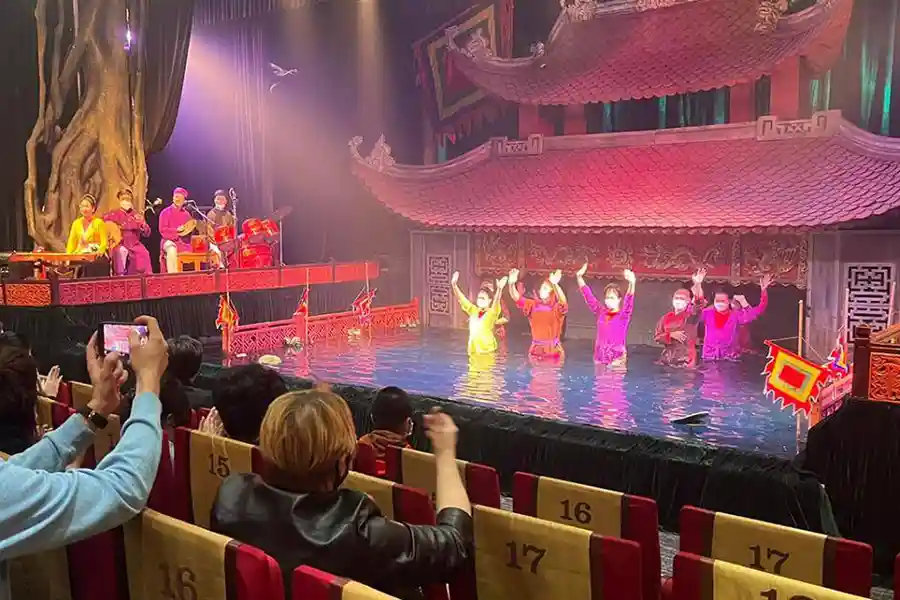
Théâtre de marionnettes sur l’eau de Thang Long
Golden Dragon water puppet theatre (Ho Chi Minh City)
Considered one of the best places to watch water puppetry in Ho Chi Minh City, the Golden Dragon Water Puppet Theatre offers an immersive experience for both locals and tourists. Situated in the heart of the city, it features skilled puppeteers and lively storytelling, ensuring an unforgettable cultural experience.
Adress : 55B Đ. Nguyễn Thị Minh Khai, Phường Bến Thành, District 1, Ho Chi Minh City
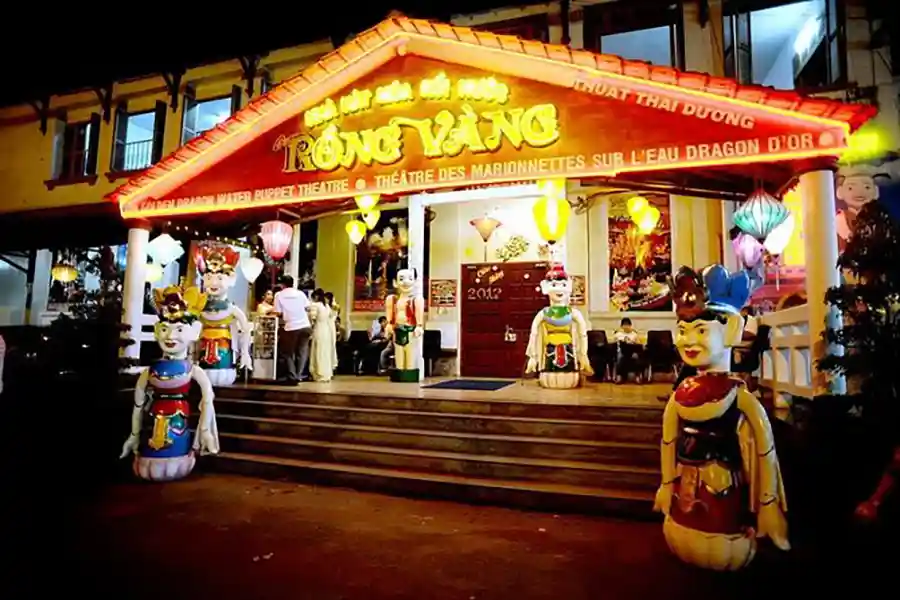
Golden Dragon water puppet theatre, Ho Chi Minh City
Thay Pagoda (near Hanoi)
Nestled just outside Hanoi, Thay Pagoda offers a unique and historical setting for enjoying a water puppet show. Known for its ancient architecture and serene environment, the pagoda occasionally hosts cultural performances, including water puppetry. The combination of natural beauty and cultural heritage makes it a memorable venue for this traditional art.
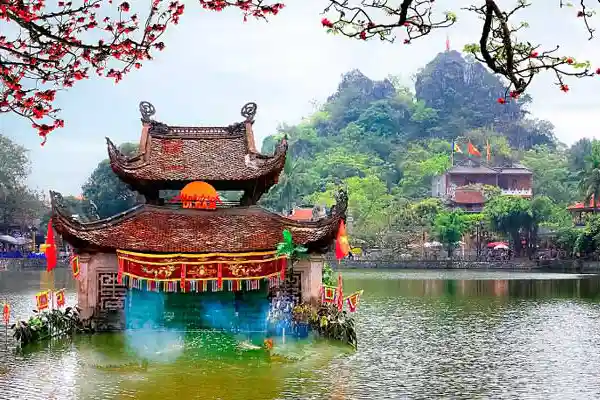
La pagode Thay transformée en décor de théâtre
Lotus water puppet theatre (Hanoi)
Another notable venue in Hanoi, the Lotus Water Puppet Theatre, offers delightful performances near the picturesque Hoan Kiem Lake. Visitors can soak in the charming atmosphere of the city while enjoying lively shows that depict Vietnamese folklore and daily life through beautifully crafted puppets.
Adress : 16, Lê Thái Tổ, Hàng Trống, Hoàn Kiếm, Hà Nội
Vietnam museum of ethnology (Hanoi)
Although not exclusively a dedicated theater, the Vietnam Museum of Ethnology in Hanoi has a smaller section devoted to water puppetry. This section offers an in-depth understanding of rural life and ethnic minorities in Vietnam through the traditional art form of water puppetry. It provides an educational and immersive experience, allowing visitors to appreciate the cultural significance of water puppet shows within the broader context of Vietnam’s diverse ethnic heritage.
If you want to gain a deeper understanding of the stories told during the performances, we recommend attending with a guide. They can provide you with information before and after the show, which will surely help you better understand what you’ve seen.
Our agency can organize a private tour that will help you discover the customs and traditions of Vietnam’s peoples. Don’t hesitate to contact us.

